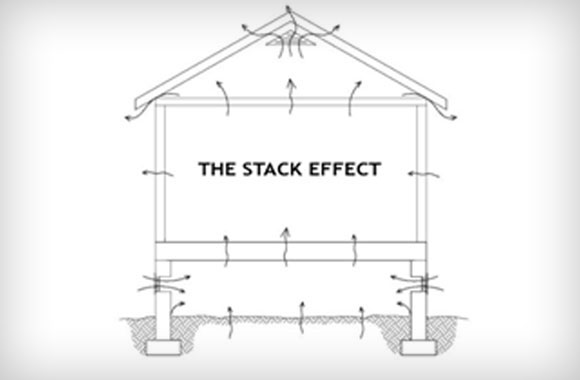The crawlspace encapsulation (sealing) concept has been around for some time. Carolina Energy Conservation has been in the home performance business for nearly a decade and crawl space encapsulation is an important part of your home’s energy performance and health. When considering your home, think of it as a single system. Your HVAC system, insulation, windows, attic, living space, and crawl space all work together. All of these building components need to be optimized and balanced to achieve maximum comfort, performance and energy efficiency. Your crawlspace is an important part of this system.
There has been much research on crawlspace encapsulation during the past decade. The US Environmental Protection Agency, the US Department of Energy, the ZEBRAlliance at Oak Ridge National Laboratories, and a non-profit research organization called Advanced Energy have all done excellent and groundbreaking research in the area of crawlspace encapsulation. Their research findings were instrumental in the last revision of the International Building Code. They all agree in a few, very important areas.Your house is like a giant chimney. By natural convection, air is drawn in through crawl space vents and air leaks. Because warm air rises, the outside air is drawn into the crawl space, through the living space (along with bacteria, mold spores, odors, and moisture) and exhausted through the attic. Building Scientists refer to this phenomenon as the Chimney or Stack Effect.

The building codes in most areas require the air in an encapsulated crawlspace to be conditioned. That generally means adding a dehumidifier to condition the air. Carolina Energy Conservation installs a SaniDry dehumidifier in our encapsulated crawl spaces. It is a heavy-duty unit specifically designed for crawl space use.When comparing high performance vapor barriers, look at puncture and tear resistance. Other than being absolutely water tight, a high performance vapor barrier should also be flexible, fire resistant, low VOC, and lightweight. There is a world of difference between the 6-mil vapor barrier material sold in most hardware stores and the high performance reinforces, multilayer specialty product installed be Carolina Energy Conservation.We’re proud of the materials we use and are always happy to provide samples.
In addition to dramatically increasing indoor air quality and protecting the structure of your home, several research studies from Advanced Energy indicate that crawlspace encapsulation can actually lower energy usage. These studies were done in several parts of the country with varying climates. A link to their study results is below.Encapsulating your crawl space is a great idea. It’s great for the environment, it will lower your utility bills, it will make your home a more pleasant place to live, and it will protect the value of what is most likely your biggest investment – your home. So, what do you need to do next? The next step is calling Carolina Energy Conservation and making an appointment with one of our crawl space building science experts for a free, no obligation assessment.
